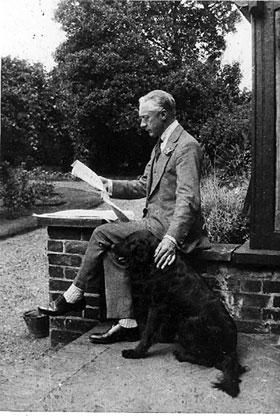WHAT IS THE ALEXANDER TECHNIQUE?
The use of the self
The Alexander Technique helps us recognize and avoid doing things that are harmful to our well being. The method is unique because, unlike most systems that advise people what to do or how to do it, the Alexander Technique teaches what not to do and how to prevent it.
The technique is concerned with what we do with ourselves as we go about our activities: how we prepare, how we co-ordinate ourselves and how we keep that co-ordination in movement. In that sense it is a “pre-technique” that can be applied to any other skill. It deals with very fundamental things such as the organization between head, neck, torso and limbs, the way we keep in balance and the distribution of tension and relaxation in the body.
Psycho-physical unity
In his search for a solution to his voice problems, Alexander progressively came to see that all movement involves the whole person. Lifting an arm, for example, is not only a movement of that part of the body. Our whole body is involved. The co-ordination that links our parts together is largely unconscious but non-the-less essential: it is the foundation on which everything else is built. Good co-ordination makes moving easy, light and efficient. When co-ordination is disturbed, movement is more difficult, causes more “wear and tear” and can lead to all sorts of health problems over time.
Alexander also recognized that no activity is purely physical or mental. In everything we do the mental and physical process are so intimately linked that it is impossible to separate them. The conscious, and unconscious, ideas we have about our bodies and how they work, the mental instructions we give ourselves, our feelings and emotions, even just the thought of doing something has an immediate effect on the muscular tension in the whole body. Alexander concluded that his problem could not be seen to be of the “body” or of the “mind” and the solutions he sought to put into place needed to address the whole.
Stimulus-reaction
We move in response to a stimulus. Stimuli can come from outside (somebody talks to us, invites us to sit, the telephone rings) or can come from within ourselves (we talk to ourselves, we invite ourselves to sit, we are hungry or itchy, we feel the need to do something). Generally, we react immediately without thinking about the way we use ourselves. We don’t think about how we open the fridge, or how we sit down; we just do it as we’ve always done, automatically, as if we can’t do it otherwise. But we can! We have the capacity to choose.

Freedom to change
The Alexander Technique gives us a way of becoming conscious of our habits and of changing. We learn to react in ways that are better suited to the demands of each activity, that respect the way we are built and are better for our health. Improved co-ordination increases our skills, even in complicated movements. We gain ‘freedom of movement’ in moving but also in our thinking and our way of dealing with things.
Inhibition
The first and most important key to change is “inhibition”: the conscious choice to stop an automatic and habitual reaction. If we can put a space between the stimulus and the response we can stop the habitual set of muscle tensions from coming into play. We open up a whole range of new possibilities. We can start afresh.
Balance
This small pause or suspension, gives us the possibility to balance ourselves. For this it is very important not to block the head in the joint with the first vertebrae. The weight of the head plays a very important role in the reflex adaptation of our balance. If we block this joint, balancing becomes holding on rather than delicate poise. It takes much more energy just to stay upright and everything requires more muscular work. If the head-neck joint is freely available it has a beneficial effect on the rest of the muscle system that is then free to do its work correctly.
Direction
When we are in balance we are ready to move and rather than being stuck in one course of action we can re-think, re-adjust, re-orientate. The spatial orientation of the different parts of the body, and of all the parts in relation to each other, brings into play the antagonistic muscular pulls that maintain our framework. We need the expansion and lengthening of that framework otherwise we squash ourselves or collapse and we can activate this expansion by directing ourselves in space.
As we are vertical beings, supported by the ground, our primary direction is “up”! This is the anti-gravity mechanism that we see working unimpeded in very young children. Despite the fact that it does work “by itself” moving is a voluntary act and our neuromuscular system replies to our wishes. When we can keep our habits from interfering we can consciously take care of these mechanisms so that they continue to work to the best advantage.
An ongoing learning process
A positive spiral is set up where better movement brings us more ease and comfort. It also helps the sensory mechanisms work more efficiently. This enhances awareness and leads again to more poise and presence. It is generally easier to be calm and centred when things work well; our thinking becomes clearer and our choices more constructive … And so the process continues, helping develop a gentle sense of wellbeing and confidence.
